Ancient Egypt ruled for over 30 centuries from the predynastic period ( 6000 B.C.E ) until the death of Cleopatra VII, the last ruler of the Ptolemaic Period ( 30 B.C.E.
During the 30 centuries, Ancient Egypt went through massive changes from building the world’s largest pyramid to making itself one of the world’s most desired trading destinations.
The Egyptian civilization began with a small number of people, hunters-gatherers living together near the Nile River. Gradually the hunting changed to grain-grinding culture as they discovered agriculture, trade, and invented numerous artifacts.
However, most of the early information of Ancient Egypt has not been recorded but is available only in the excavated monuments and inscriptions.
The gradual change and advancement of Ancient Egypt are explained in this article based on the respective timeline with details.
Predynatic period (6000 B.C.E – 3100 B.C.E )
Content

The Predynastic period, which existed before the recorded history around the Paleolithic and Neolithic Age, began around 6000 B.C.E. and lasted until 3100 B.C.E.
This period preceded the beginning of the first dynasty in Egypt. It established a pattern of civilizations during the early 6th Century, which the Ancient Egyptians characterized.
Initially, there existed a group of hunter-gatherers which was replaced by the grain-grinding culture. Climatic changes began taking place, and people migrated around the Nile River and developed agricultural economies.
There are no written records of this period; however, the findings related to this period have been made through archaeological excavations.
The significant finding from the excavation was the artifacts that had the facts and details about the development of culture and civilization in the Nile River valley.
And, the periods included during the prehistoric period have been named after the cities or regions where the artifacts were discovered.
Early dynastic period (3100 B.C.E – 2686 B.C.E)
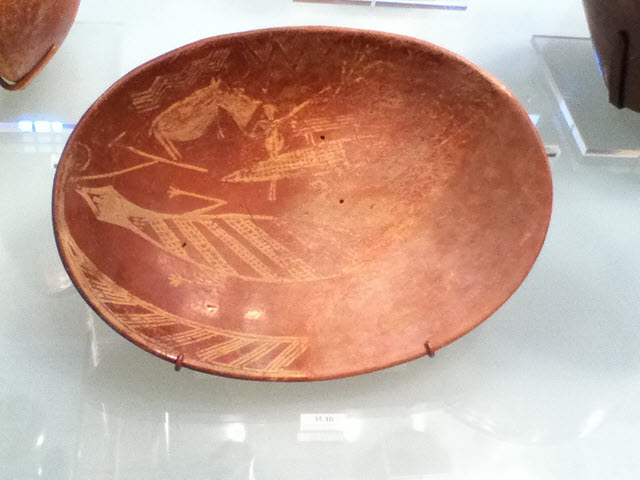
The early dynastic period began from the Protodynatic Period of Egypt in 3100 B.C.E. and lasted until the beginning of the Old Kingdom in 2686 B.C.E.
This period included the first two dynasties of Ancient Egypt and was famous for unifying Lower ( north ) and Upper Egypt ( south ) around 3100 B.C.E.
It also included the first series of Egyptian Kings that ruled to unify Egypt, where the lower and upper Egypt was unified by an Egyptian Pharaoh, Narmer.
During the unification, the capital of Ancient Egypt was changed from Thinis to Memphis. The unification brought the invention of art, architecture, religion, and culture and began the historical era.
This period had a practice of human sacrifice and animal sacrifice associated with the Pharaohs as some retainers were buried near the tombs of Egyptian Pharaohs.
The most famous tomb was the Tomb of Djer, where about 338 individuals were buried along with the tomb. The primary reason behind the burial ritual was to be able to assist the pharaoh in the afterlife.
The majority of the information gathered about this period was collected from monuments and objects with Royals’ names as Pharaoh Narmer Palette, Narmer Macehead, and Den.
Old Kingdom (2686 B.C.E. – 2181 B.C.E.)

The old kingdom began from 2686 B.C.E. and ruled until 2181 B.C.E. and consisted of 4 dynasties from dynasty 3 to dynasty 6. However, it reached its peak during the fourth and fifth dynasties.
It had 15 Egyptian Pharaohs during its ruling period, and the most significant Pharaohs were Pharoah Khufu and Pharoah Sneferu.
The most famous Pharoah of this period was Khufu, as he built the great pyramid and extended the borders of Egypt up to the Sinai.
The dynasty began with Pharoah Sneferu ( 2613 – 2589 B.C.E.), a great pyramid builder who commissioned three pyramids: Pyramid in Meidum, Red Pyramid, and Bent Pyramid.
The other significant pyramids of this period were the largest pyramid – the Pyramids of Giza, listed under the seven wonders of the world, the pyramid of Djoser, and the Bent pyramid.
Apart from the pyramids, this period was also known for establishing a culture that lasted for 2500 years and Egyptian inventions of artistic style, religion, trade network, and government system.
First Intermediate period ( 2181 B.C.E – 2055 BCE )
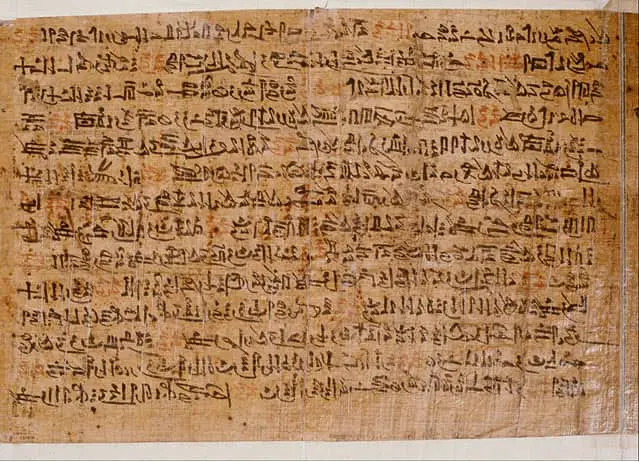
This period began in 2181 B.C.E. and lasted until 2055 B.C.E. and was known as the dark period. It started with the weakening of the monarchy and gaining power by the provincial rules.
Dynasties from the 7th up to the 10th were included in this period. The power mainly was divided between two power bases: Thebes in upper Egypt and Heracleoplis in Lower Egypt.
Like most other periods, this period too was known for numerous inventions, architecture, and artifacts. On the contrary, it was full of chaos, and it ended with the rise of Mentuhotep II of Thebes.
Majorly as he united the country and initiated the time famously known as the Middle Kingdom of Egypt, the other major factor to end this period was the very long reign of Pepi II: the last King of the sixth dynasty.
The Middle Kingdom ( 2055 B.C.E. – 1650 B.C.E.)
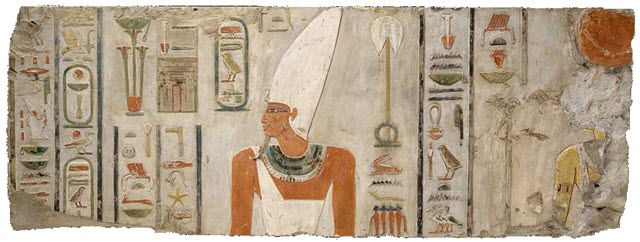
This period was established by Mentuhotep II, King of the 11th dynasty of Egypt, while he was the mighty King of Southern Egypt.
It began in 2055 B.C.E. and lasted until 1650 B.C.E. with the dynasties from 11 to 13. This period was known as the Golden Age due to the significant Egyptian inventions, discoveries, and achievements.
The notable were art, new style and technique of architecture as block style, use of stone for art, irrigation, increment in the harvest with the help of the Nile River, and construction of monuments.
They were also known for creating and telling stories, and the most famous story was the Tale of the Shipwrecked Sailor.
Like in every period, Egyptians had faith and belief in pharaohs and deities in this period. The most celebrated deity during this period was the Osiris and Pharoah Senusret III.
Senusret brought peace and prosperity to Egypt and was also considered the most powerful Egyptian ruler for expanding the territory during his reign.
Second Intermediate Period (1650 B.C.E – 1550 B.C.E)
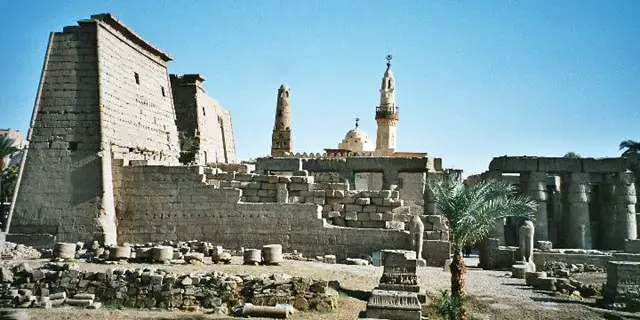
The second Intermedia Period is the period between the Middle and the Kingdom, which began in 1650 B.C.E. It lasted until 1550 B.C.E. It included dynasties from 13 to 15.
Egyptian territories were divided between the Kingdom of Kerma, the Kingdom of Avaris, and the Theban Kingdom.
Ancient Egypt fell into disorganization for the second time between the Middle and the New Kingdom.
This period ruled peacefully until the invasion of the Hyksos, a Semitic- western Asiatic people ( Kings of the 15th Dynasty ) invaded the Nile Delta and ruled Egypt with cruelty.
The two Egyptian Pharoah, Kamose and Seqenenre Tao, fought against Hyksos to come out of the invasion. Unfortunately, Kamose died during the fight, and his brother, Ahmose, ousted the last of Hyksos and became the first Pharaoh of the New Kingdom of Egypt.
The New Kingdom ( 1550 B.C.E. – 1070 B.C.E.)
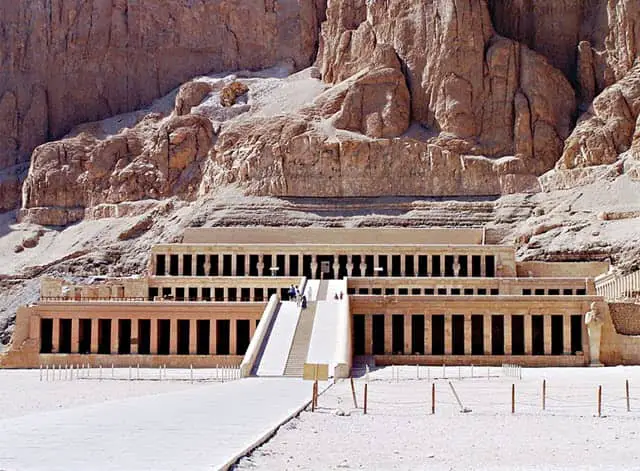
The New Kingdom, also known as the Egyptian Empire, began in 1550 B.C.E. After the second intermedia period and lasted until 1069 B.C.E. with the beginning of the third intermediate period.
The primary reason for the beginning of this period was the expulsion of the Hyksos with the power of Pharaohs Kamose, Ahmose, and Seqenenre.
This period included dynasties from 18 to 20 and was considered the Golden Age of the civilization of Ancient Egypt for bringing along wealth, power, prosperity, and peace.
Eleven pharaohs, all named Ramessesor Ramses, consisted in this period, majorly in the 18th and 19th dynasties, who used their wealth to build temples. The most famous temples were the Temple of Luxor and the Temple of Karnak.
Apart from this, the New Kingdom was modernized, professionalized, and had an aggressive foreign policy compared to the old kingdom and other periods.
However, it ended with the rise of the priest’s power of Amun as they began to assert their authority at Thebes and divided the country between their rule and the pharaohs in the cities of Per- Ramesses.
Third Intermediate Period ( 1070 B.C.E – 664 B.C.E )
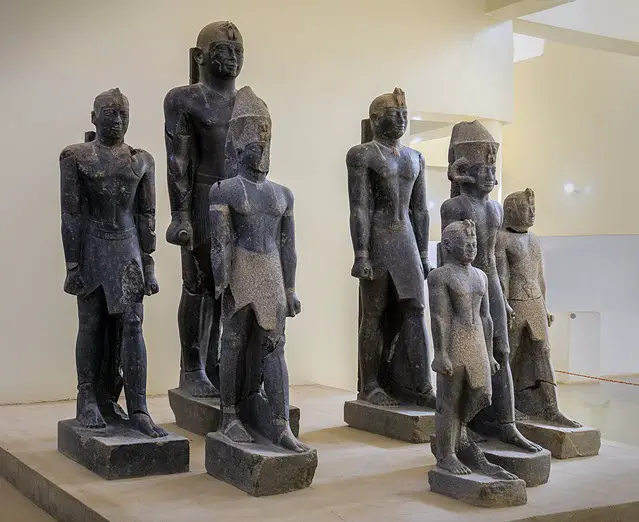
The third intermedia period, with dynasties from 21 to 25, began with the death of Egyptian Pharoah Ramesses XI in 1070 BCE. The throne then was passed to Smendes, one of the Norther relatives of High priest Amun.
During the first phase of this period, from 1070 to 945, the period was ruled by Pharaoh ruling from Tanis in the Eastern Delta, and the High Priests of Amun led the Thebes.
A powerful family of Libyan descent ruled the second phase from 945 BC on the Eastern Delta.
Like most other periods, this period too was famous for its achievements in arts, architecture – tombs built with gold-bronze- silver, Egyptian paintings, and trade.
Late Period ( 664 B.C.E – 332 B.C.E)
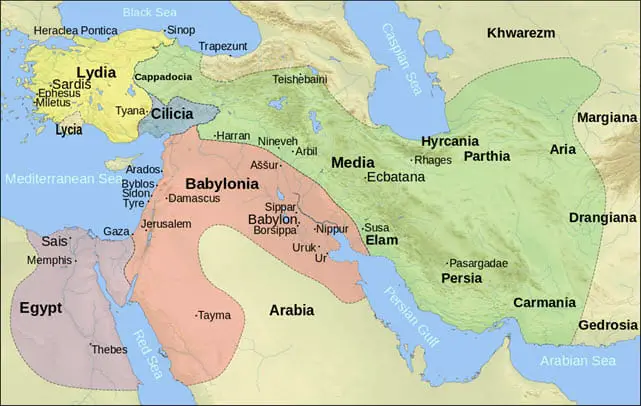
With dynasties from 26 to 31, the late period began in 664 B.C.E. and lasted until 332 B.C.E. The 26th dynasty was known as the Senate dynasty due to its seat of power at the city of Sais that reigned from 672 to 525 B.C.
The 27th dynasty began in 525 and lasted until 404 BC. In contrast, the last or the 31st dynasty was the second Achaemenid period that saw the re-inclusion of Egypt as a satrapy of the Persian Empire. The re-inclusion of Egypt began with the battle of Pelusium.
This period was famous for the flowering of Native Egyptian rulers. However, it ended with the conquests of the Persian Empire by Alexander the Great, who then established the Ptolemaic dynasty by his general Ptolemy I Soter.
Ptolemaic Period

The Ptolemaic period began with the defeat of the Persian Empire by Alexander the Great in 332 BCE. However, Ptolemy took over Egypt after the death of Alexander the Great in 323 BCE.
Though Egypt was ruled in Alexander’s name, King Ptolemy proclaimed himself the ultimate ruler and ruled from 305 BCE until 30 B.C.E.
However, this period ended along with the death of the last ruler of the Ptolemaic period, Cleopatra VII, on the 12th of August, 30 B.C.E. Her son too was executed by Octavian, and the Empire of Egypt was annexed to Roman Empire.
Conclusion
Ancient Egypt began with no recorded history and ended with a massive, impactful historical event. The rulers, pharaohs, and inspiring people made numerous significant changes all along the way from 6000 B.C.E. to 30 B.C.E.
